7 Fruits That Look Like One Thing, But Taste Like Another
Bizarre fruits that taste like chicken (really!), ice cream, scrambled eggs, and more.
7 Fruits That Look Like One Thing, But Taste Like Another
Bizarre fruits that taste like chicken (really!), ice cream, scrambled eggs, and more.
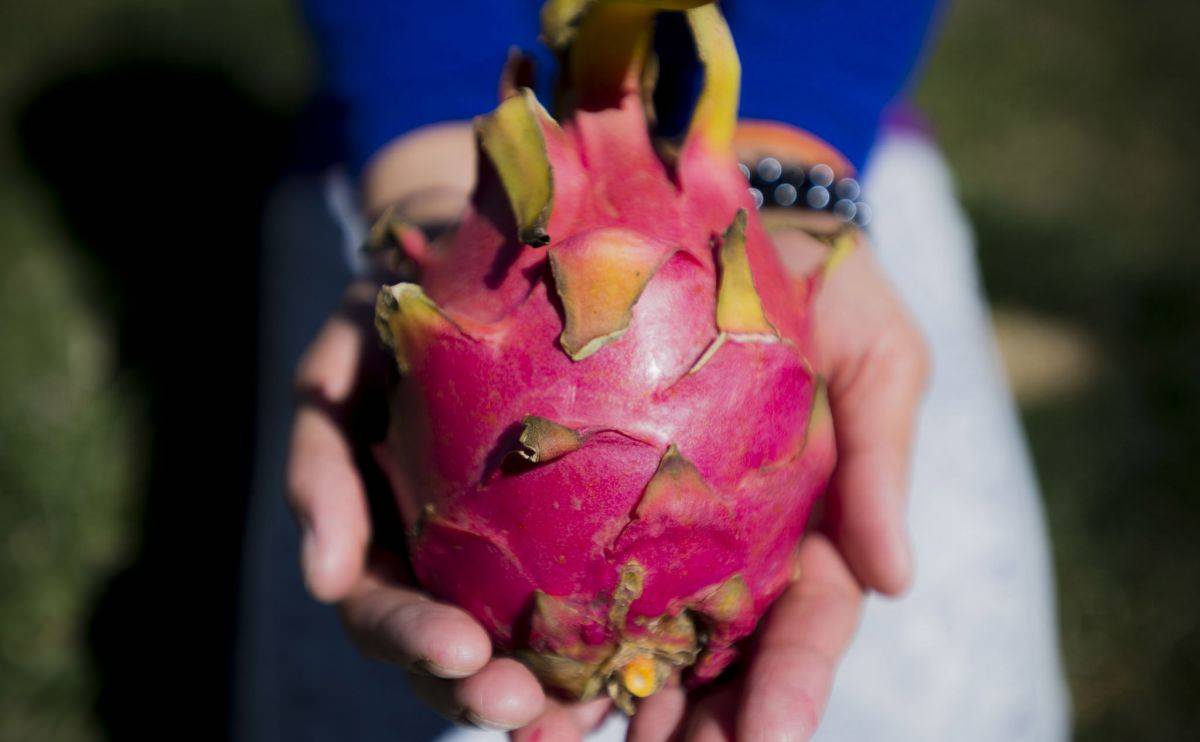
Cotton Candy Grapes
The last grape-related gimmicky fruit that really made a splash was the Grapple, an apple that had been soaked in grape juice. Not really that exciting, when you put it that way. But this year, the most intriguing new grape variety is the Cotton Candy Grape, bred in California. No genetic engineering, no sneaky added flavors: The breeders simply crossbred until they came up with the flavor they wanted, a peculiarly light, incredibly sweet flavor more than a little reminiscent of spun cotton candy.
Jackfruit
Sometimes fruits have a totally different flavor when unripe versus when ripe. Think of the mango or papaya, which, when unripe and green, are crunchy, vegetal, and usually used as a vegetable. The jackfruit, though, takes that a step further. A gigantic, spiky fruit – like, up to 80 pounds – the jackfruit is native to South and Southeast Asia. When unripe, the flesh, which comes out in kind of pod shapes, has a taste and texture weirdly similar to chicken breast. When ripe, it’s something else entirely: a crazy-sweet tropical flavor that’s been variously described as somewhere near pineapple and somewhere near bubblegum. From the outside, it looks more like a medieval weapon than anything that could be described as similar to bubblegum.
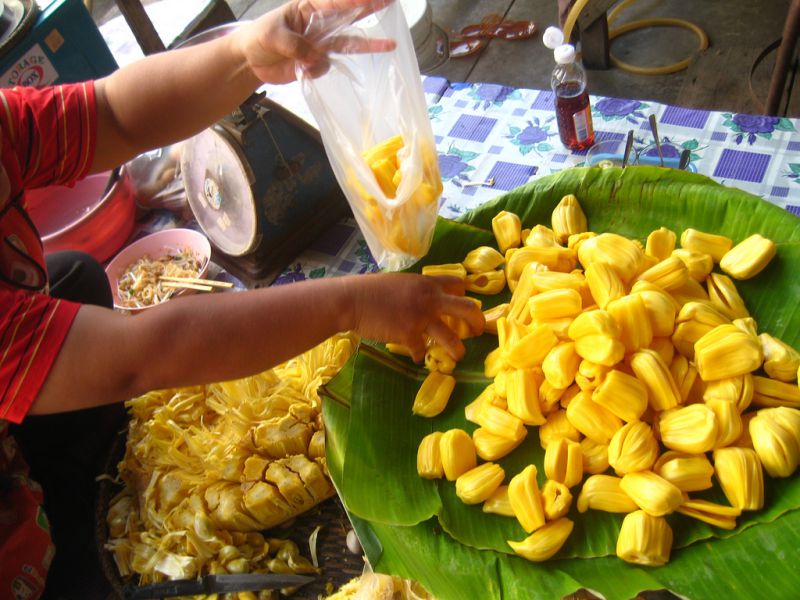
Durian
Another big spiky fruit is the legendary durian, also native to Southeast Asia. The durian’s misleading nature comes not because it’s a mean-looking fruit that tastes delicious, but because it’s a mean-looking fruit that doesn’t taste like a fruit at all. The durian’s strong, almost putrid odor masks a creamy flesh that tastes sort of like a garlic-onion puree. (It’s an acquired taste.)

Blue Java Banana
Here in the US, we’re accustomed to one, two, or maybe three types of bananas. There’s the “regular banana,” which is technically of the Cavendish variety. There are baby bananas, too, which show up in markets sometimes, and I suppose you could toss plantains into the mix, too. Few Americans are familiar with the Blue Java banana, a variety that is, yes, a pale and lovely blue, which is weird enough already. But it gets weirder: The Blue Java is also sometimes known as an “ice cream banana,” because it tastes bizarrely similar to vanilla ice cream.
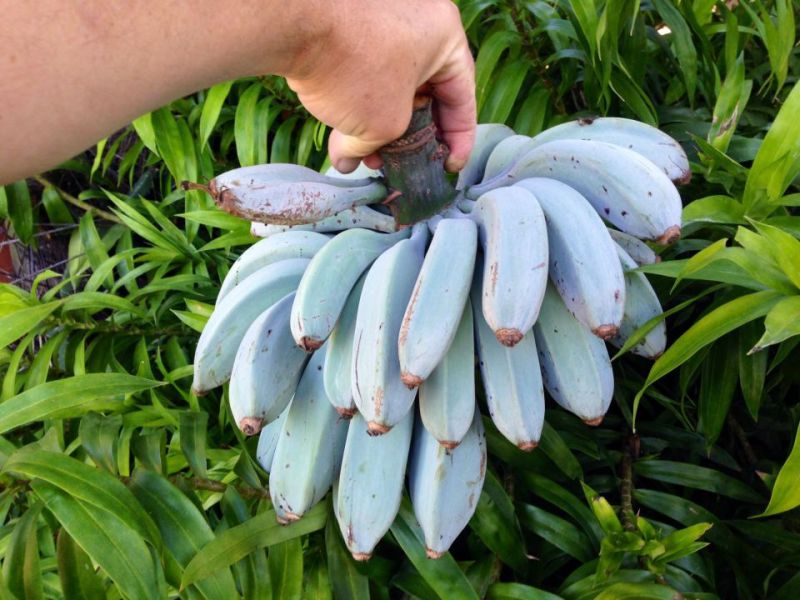
Pineberry
Strawberries are pale when unripe, a fact that’s becoming more relevant as chefs have begun playing with green, unripe strawberries in savory dishes and pickles. But pineberries are even paler than that: They’re small, nearly white berries that debuted in the New York area in 2012. But they don’t taste like regular strawberries: In Germany, they’re known by the name “pineapple-strawberry,” testifying to their distinctly pineapple-like flavor.
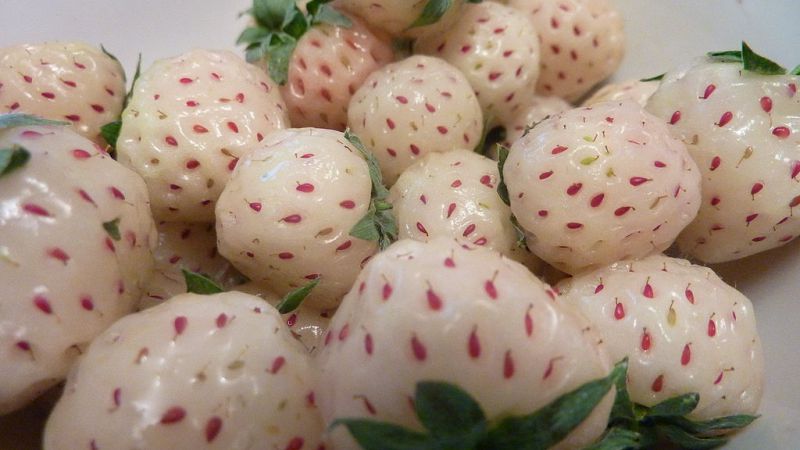
Ackee
The ackee is a fruit in the lychee family, native to West Africa. It spread with the slave trade and found itself best loved in Jamaica, where it’s become an integral part of the national dish, ackee and saltfish. The fruit is shaped sort of like a brain, and pale white on the inside while bright, festive red on the outside. However, it doesn’t taste like a tropical fruit at all – its flavor and texture are most similar, flying in the face of all reason, to scrambled eggs.
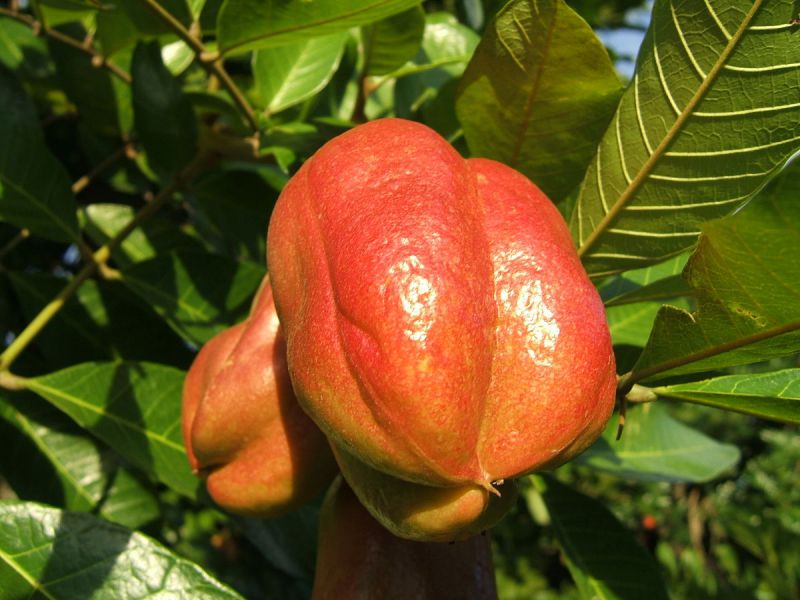
Dragonfruit
The dragonfruit, pictured at the top of this post, is perhaps the world’s coolest-looking fruit: a supernatural orange-pink, oblong with petal-like protrusions coming out from all sides. And it’s called the dragonfruit! What a cool name! Open it up, and you might be even more intrigued: The most common varieties are either pure white or a blood red, both with many tiny black seeds. And all of that crashes to the ground as soon as you taste it, because the best-looking fruit in the world is also one of the most bland. Dragonfruit tastes like an unholy offspring of a kiwi and a glass of sugar-water. Zero acidity, very little flavor, just a slight sweetness. It stinks.
Follow us
This work is licensed under a Creative Commons Attribution-NoDerivatives 4.0 International License.
Want to republish a Modern Farmer story?
We are happy for Modern Farmer stories to be shared, and encourage you to republish our articles for your audience. When doing so, we ask that you follow these guidelines:
Please credit us and our writers
For the author byline, please use “Author Name, Modern Farmer.” At the top of our stories, if on the web, please include this text and link: “This story was originally published by Modern Farmer.”
Please make sure to include a link back to either our home page or the article URL.
At the bottom of the story, please include the following text:
“Modern Farmer is a nonprofit initiative dedicated to raising awareness and catalyzing action at the intersection of food, agriculture, and society. Read more at <link>Modern Farmer</link>.”
Use our widget
We’d like to be able to track our stories, so we ask that if you republish our content, you do so using our widget (located on the left hand side of the article). The HTML code has a built-in tracker that tells us the data and domain where the story was published, as well as view counts.
Check the image requirements
It’s your responsibility to confirm you're licensed to republish images in our articles. Some images, such as those from commercial providers, don't allow their images to be republished without permission or payment. Copyright terms are generally listed in the image caption and attribution. You are welcome to omit our images or substitute with your own. Charts and interactive graphics follow the same rules.
Don’t change too much. Or, ask us first.
Articles must be republished in their entirety. It’s okay to change references to time (“today” to “yesterday”) or location (“Iowa City, IA” to “here”). But please keep everything else the same.
If you feel strongly that a more material edit needs to be made, get in touch with us at [email protected]. We’re happy to discuss it with the original author, but we must have prior approval for changes before publication.
Special cases
Extracts. You may run the first few lines or paragraphs of the article and then say: “Read the full article at Modern Farmer” with a link back to the original article.
Quotes. You may quote authors provided you include a link back to the article URL.
Translations. These require writer approval. To inquire about translation of a Modern Farmer article, contact us at [email protected]
Signed consent / copyright release forms. These are not required, provided you are following these guidelines.
Print. Articles can be republished in print under these same rules, with the exception that you do not need to include the links.
Tag us
When sharing the story on social media, please tag us using the following: - Twitter (@ModFarm) - Facebook (@ModernFarmerMedia) - Instagram (@modfarm)
Use our content respectfully
Modern Farmer is a nonprofit and as such we share our content for free and in good faith in order to reach new audiences. Respectfully,
No selling ads against our stories. It’s okay to put our stories on pages with ads.
Don’t republish our material wholesale, or automatically; you need to select stories to be republished individually.
You have no rights to sell, license, syndicate, or otherwise represent yourself as the authorized owner of our material to any third parties. This means that you cannot actively publish or submit our work for syndication to third party platforms or apps like Apple News or Google News. We understand that publishers cannot fully control when certain third parties automatically summarize or crawl content from publishers’ own sites.
Keep in touch
We want to hear from you if you love Modern Farmer content, have a collaboration idea, or anything else to share. As a nonprofit outlet, we work in service of our community and are always open to comments, feedback, and ideas. Contact us at [email protected].by Dan Nosowitz, Modern Farmer
October 9, 2015
Modern Farmer Weekly
Solutions Hub
Innovations, ideas and inspiration. Actionable solutions for a resilient food system.
ExploreExplore other topics
Share With Us
We want to hear from Modern Farmer readers who have thoughtful commentary, actionable solutions, or helpful ideas to share.
SubmitNecessary cookies are absolutely essential for the website to function properly. This category only includes cookies that ensures basic functionalities and security features of the website. These cookies do not store any personal information.
Any cookies that may not be particularly necessary for the website to function and are used specifically to collect user personal data via analytics, ads, other embedded contents are termed as non-necessary cookies.
I can’t believe you trashed dragonfruit. It’s one of the most nutritious fruit in the world. And I’ve had some in the Philippines that were so sweet they could compete with a pineapple. I try to eat them as much as possible. In the US they’re probably bland because… I don’t know, but it’s easy to pick a dragonfruit that’s bland. But eat it anyway and enjoy the mild sweetness.
For the last few years a bunch of new fruit. and vegi’s have been introduced here in the USA it would be nice if you would post pictures of the fruit in the artcial so we know what it looks like. Thank you nice reading
I’m an avid gardener and always looking for something different to plant.
I don’t think you’re ever tried real dragon fruit. The ones in the west taste like water but I’ve had purple dragon fruit in China that are sooo sweet and fresh. Its one of my favourite fruits that I wish I could find here. They do sell them here but they definitely don’t taste like the original. Maybe 1/10 of the sweetness of dragonfruit from China
Dragon fruit almost flavorless the white ones
Haha. I agree about dragonfruit if it’s pink. But yellow dragonfruit is a little sweeter and not bland.
What is the fruit called that looks like a purple grape or even a black Olive? The fruit has the tendency to dry out your mouth?
We call it jamun in Trinidad too
N O I C E
What is the berry that looks like a strawberry and tastes like watermelon?